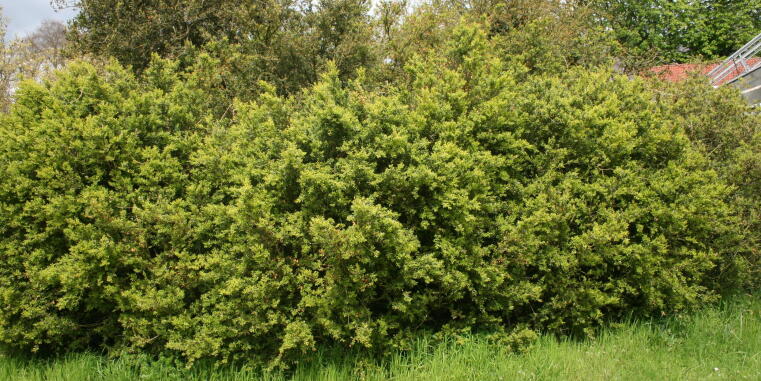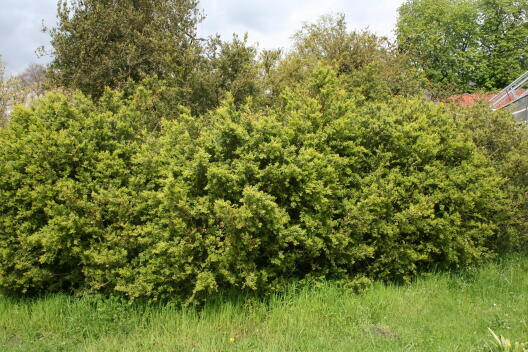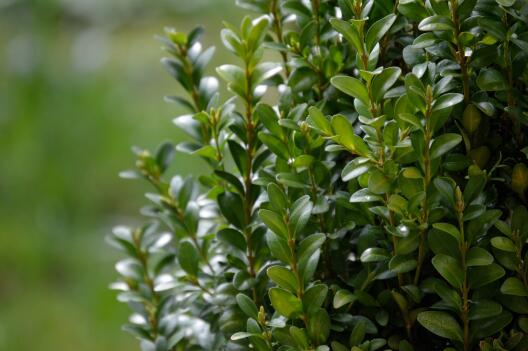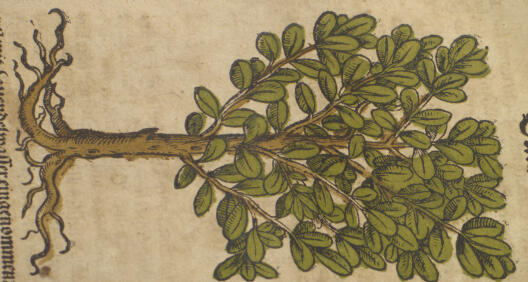



order: Buxales
family: Buxaceae
genus: Buxus
species: Common box (Buxus sempervirens)
attributes: evergreen shrub or small tree, one to nine meters in height
origin: central and southern Europe (up to England), northern Africa and western Asia
habitat: oceanic climate, by now also in New Zeeland and eastern USA
I will plant the cedar in the wilderness, the acacia tree, and the myrtle, and the oil tree. I will set the fir tree in the desert, and the pine, and the box tree together.
Isaiah 41,19
The box tree (Hebrew: תְּאַשּׁוּר (tə’aššûr)) is mentioned primarily in the Book of Isaiah. In both cases it is included in poetic enumerations of other plants which are meant to adorn the desert or landscape. In Isaiah 60,13 it is mentioned alongside cypress and pine. The box tree also entered the Old Testament on another, slightly unconventional way. In Hesekiel 27,6, where the city Tyros is compared to a proud ship owing to it‘s direct access to the sea, Luther opted for the translation box tree, although modern scholars agree that the original text referred to an oar.
Many exhibits of the Bible Museum are linked directly to the box tree. The carvings and etchings on display were often made with the help of printing plates made of box tree, whose wood is especially hard and allows delicate carving.
The common box is also popular in folk tradition. Many Roman-Catholic communities use evergreen box twigs instead of exotic palm leaves during Palm Sunday processions which are afterwards fixed at crosses in the houses.
mentions: seldom
other text passages (selected):
Isaiah 60,13
Neumann-Gorsolke, Ute: Buchsbaum, in: Das wissenschaftliche Bibellexikon im Internet (Dez. 2005), URL: https://www.bibelwissenschaft.de/stichwort/10782/ (abgerufen am 01.05.2023).
Die Bibel nach der Übersetzung Martin Luthers, revidierte Fassung, Stuttgart 2017.
Hepper, F. Nigel: Der Bibel-Garten. Pflanzen der Bibel im eigenen Garten, Asslar 1998.
Modern King James Version.



